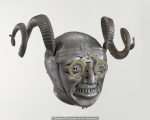
It’s that time of week again! Sunday is the day of the week where we exercise the little grey cells with our Tudor quizzes. This week’s quiz is a Tudor trivia quiz – good luck!
[Read More...]
It’s that time of week again! Sunday is the day of the week where we exercise the little grey cells with our Tudor quizzes. This week’s quiz is a Tudor trivia quiz – good luck!
[Read More...]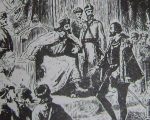
I’ve been inspired recently to research the links between Russia and the Tudors so I hope you enjoy this video talk on the Muscovy Company.
[Read More...]
Historian Lauren Browne will be joining us in the Tudor Society chatroom on Saturday 26th August to answer your questions on her recent talk on Rivals and Mistresses and to chat about this topic and her research.
[Read More...]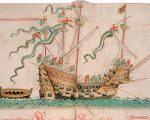
On this day in history, 10th August 1512, the Battle of Saint-Mathieu took place. It was a naval battle in the War of the League of Cambrai and it was between the English and Franco-Breton fleets off the coast of Brest, in present day Brittany, France. England was allied with Spain and the Holy Roman Empire at this time.
The Mary Rose, Henry VIII’s famous warship whose wreck was discovered in 1971 and raised in 1982, was chosen as the English fleet’s flagship by Sir Edward Howard, Admiral of the English fleet. It was her first battle. The twenty-five ship English fleet had set out from Portsmouth, on the south coast of England, after hearing news of the twenty-one ship French fleet gathering at Brest, and the two fleets engaged in Berthaume Bay on 10th August 1512.
[Read More...]
Thank you to Roland Hui for letting me know about this online event.
Join 16th-century historians and bloggers at The Tudor Summit 2017 happening online on September 3 and 4! Speakers familiar to Tudor Society members include Nathen Amin (author and founder of The Henry Tudor Society), Natalie Grueninger (creator of On the Tudor Trail), author Tony Riches, Rebecca Larson (creator of Tudors Dynasty and Roland Hui (author and blogger at Tudor Faces). The keynote address will be given by historian Sarah Gristwood, author of ‘Game of Queens’.
[Read More...]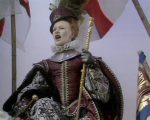
Today is the anniversary of Queen Elizabeth I’s rousing speech to the troops at Tilbury Fort on 9th August 1588. While we don’t have Elizabeth I herself on film, it’s a speech that has featured in many movies and TV series. You can read the various versions we have of the original Tilbury speech in my article from 2015, but here are a few famous depictions of that day in 1588.
[Read More...]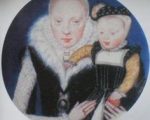
“The battle for the throne isn’t over yet” is the tagline of Philippa Gregory’s latest Tudor novel, “The Last Tudor”. Released yesterday, this novel focuses on the Grey sisters: Jane, Katherine and Mary, who, of course, had claims to the throne through their grandmother Mary Tudor, daughter of Henry VII.
The lives of these three young women were explored in one of my all-time favourite history books, “The Sisters Who Would Be Queen” by Leanda de Lisle. It is a wonderful book. It’s meticulously researched and highly readable, a winning combination, and deserves pride of place on every Tudor history lover’s bookshelf. Philippa Gregory’s novel is actually inspired by Leanda’s research so I’m looking forward to reading this novel. To celebrate the release of Philippa’s novel, Leanda has kindly shared the following excerpt from “The Sisters Who Would Be Queen” with us today:
“On 10 October 1562, when Elizabeth was at Hampton Court, she had begun to feel unwell, with aches and pains in her head and back. She had decided to have a bath and take a short walk to shake it off. When she returned to her chambers, however, she became feverish. A physician was called. To Elizabeth’s irritation he diagnosed the potentially deadly Small Pox. Since there were as yet no blisters, she refused to accept the diagnosis, but sickness and diarrhoea followed and she became delirious. By 16 October the Queen could no longer speak. On the 17th she was unconscious.
[Read More...]
ugust’s informal live chat will take place in the chatroom this Saturday, 12th August. The topic is Tudor food and recipes.
If you’ve never been to one of our informal live chats then let me explain… We all pile into the chatroom and then it’s a free-for-all. It’s an hour where we can discuss the chosen topic, share our thoughts, share book recommendations, pose questions…anything really. It’s always good fun and the hours flies by. So for this one, we can discuss the foods the Tudors ate, how they cooked it, how they preserved it, books about Tudor food and cookery, recipes we have tried etc. I do hope you can come along.
[Read More...]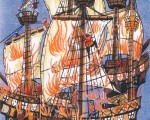
On this day in Tudor history…
7th August:
1485 – Henry Tudor (future Henry VII) dropped anchor at Mill Bay, Milford Haven, Wales. He had returned from exile to claim the crown of England. Click here to read more.
1514 – Peace treaty signed between England and France, arranging the marriage of the widowed fifty-two-year-old Louis XII of France and the eighteen-year-old Princess Mary Tudor, sister of Henry VIII.
1541 – Death of Sir Richard Weston, courtier and father of Sir Francis Weston who was executed in 1536 for alleged adultery with Queen Anne Boleyn. Richard served Henry VII as Groom of the Chamber and Henry VIII as an Esquire of the Body, Governor of Guernsey and treasurer of Calais. He was buried in Holy Trinity Church, Guildford.
1549 – The five-year-old Mary, Queen of Scots set sail from Dumbarton, Scotland, for France. A marriage had been agreed between Mary and Francis, the Dauphin, so Mary was going to be brought up at the French court. Mary arrived at Saint-Pol-de-Léon, near Roscoff in Brittany, just over a week later.
1574 – Sir Robert Dudley, mariner, cartographer and landowner, was born on this day in 1574 at Sheen House, Richmond. He was the illegitimate son of Robert Dudley, Earl of Leicester and favourite of Elizabeth I, and his lover Lady Douglas Sheffield, daughter of William Howard, 1st Baron Howard of Effingham, and widow of John Sheffield, 2nd Baron Sheffield.
1600 – Burial of Sir Thomas Lucy in the parish church at Charlecote, Warwickshire. Lucy was a magistrate and member of Parliament, but is best known for his links with William Shakespeare. Tradition has it that Shakespeare wrote a satirical ballad about Lucy, or he made a caricature of him in the character of Judge Shallow, as revenge after he was judged too harshly for poaching on Lucy’s estate, Charlecote Park. There is no evidence to support this story.
1613 – Death of Sir Thomas Fleming, Solicitor-General to Elizabeth I and James I, at Stoneham Park. He also served James I as Chief Justice of the King’s Bench. He was buried at North Stoneham Church.
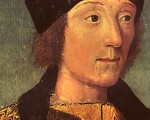
On this day in history, Sunday 7th August 1485, Henry Tudor, son of Lady Margaret Beaufort and the late Edmund Tudor, Earl of Richmond, “came unto Wales”, returning from exile in Brittany to claim the throne of England from Richard III.
Polydore Vergil records Henry’s return:
“Than Henry, thinkinge yt nedefull to make haste, that his arrive the frinds showld not be any longer kept in perplexytie betwene hope and drede, uncertane what to do, after he had made hisprayers to God that he might have an happy and prosperousjourney, he lowsyd from the mowth of Seyne with two thousand onely of armyd men and a few shippes, the calends of August, and with a soft suthren wynde. The weather being very fayre he came unto Wales the 7th day after, a lyttle before soone set, wher, entring thaven caulyd Milford, and furthwith going a land, he took
first a place the name wherof ys Dalley, wher he herd that certane companyes of his adversaryes had had ther stations the wynter by past to have kept him from landing. From thence departing in the breake of dav he went to Haverforde, which vs a towne not xne. myles from Dalley, wher he was receavyd with great goodwill of all men, and the same he dyd with suche celerytie as that he was present and spoken of all at once.”
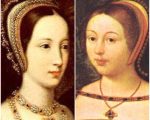
Showtime’s “The Tudors” TV series caused all kinds of confusion by amalgamating Henry VIII’s two sisters in one character named Margaret, and throwing in lots of inaccuracies too! So, how much do you know about these two women and do you know which woman did what?
Grab a drink and snack, sit comfortably and get those little grey cells working with today’s fun history quiz. Good luck!
[Read More...]
Today is the anniversary of the death of Anne Hathaway, wife of William Shakespeare, the Bard, in 1623. She was laid to rest next to her husband in the Church of the Holy Trinity, Stratford-upon-Avon.
Anne married Shakespeare in November 1582 when she was twenty-six and he was eighteen. She was pregnant at the time and gave birth to their daughter, Susannah, in May 1583. The couple went on to have twins, Hamnet and Judith, in February 1585. Anne outlived her husband, who died on 23rd April 1616.
Here is a video about Anne Hathaway:
[Read More...]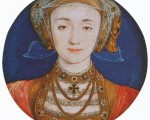
Today is the anniversary of the death of Anne of Cleves and to mark the occasion Claire looks at some texts associated with her.
[Read More...]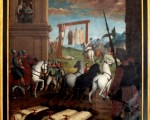
On 4th August 1540, Brother William Horne, laybrother of the London Charterhouse, was executed. He was hanged, disembowelled and quartered at Tyburn and was the last of the Carthusian Martyrs to be killed. Between May 1535 and August 1540, eighteen members of the Carthusian order were put to death for refusing to accept King Henry VIII as the Supreme Head of the Church.
You can read more about the Carthusian Martyrs in my article Henry VIII and the Carthusian Monks.
Horne wasn’t the only one to be executed that day. Chronicler Charles Wriothesley records:
“This yeare, the fowerth daie of Awgust, were drawen from the Tower of London to Tiburne, Giles Heron, gentleman, Clement Philpott, gentleman, late of Callis, and servant to the Lord Lile, Darbie Gynning, Edmonde Bryndholme, priest, William Horn, late a lay brother of the Charter Howse of London, and another, with six persons more, were there hanged drawen, and quartered, and one Charles Carow, gentleman, was that daie hanged for robbing of my Ladie Carowe, all which persons were attaynted by the whole Parliament for treason.”
[Read More...]
The Prayer Book Rebellion was a rebellion that took place in the south-west of England in the summer of 1549, in the reign of King Edward VI.
Henry VIII, Edward VI’s father and the previous monarch, had broken with Rome in the 1530s and had been declared the Supreme Head of the Church in England. Although Henry had died a Catholic, the break had brought religious changes to the country and these had become more Protestant when his young son came to the throne.
In 1549, the Book of Common Prayer, which had been composed mainly by Archbishop Thomas Cranmer and which was the official liturgy of Edward VI’s Protestant Church, was introduced into England. It was in English and it replaced the Catholic Mass that the English people were used to celebrating. You can read more about the Book of Common Prayer in Beth von Staats’ excellent article – click here. This change wasn’t embraced by all of the English people and in the summer of 1549, there was trouble in Devon and Cornwall. The rebels called for the rebuilding of abbeys, the restoration of the Six Articles, the restoration of prayers for souls in purgatory, the policy of only the bread being given to the laity and the use of Latin for the mass.
[Read More...]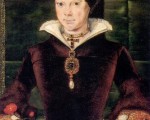
On 2nd August 1553, Elizabeth, second daughter of King Henry VIII, greeted her half-sister Mary, the new queen, at Wanstead. The women then spent the night at Wanstead House, a royal hunting lodge. The following day, 3rd August, Mary and Elizabeth rode from Wanstead to Aldgate for Mary to be greeted by the city as its queen.
Here are some primary source accounts of Mary I’s entry into London on 3rd August 1553…
Henry Machyn, “citizen and merchant-taylor of London”, recorded in his diary:
[Read More...]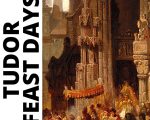
The eighth book in our exclusive Tudor Society e-book series is now available and this one takes you through the calendar year one feast day at a time. Learn about how the religious calendar affected the daily lives of the Tudors in our Feast Days e-book.
[Read More...]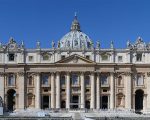
On this day in history, 2nd August 1581, Protestant Richard Atkins was burned to death before St Peter’s in Rome. It is said that as he was taken to St Peter’s, his back and breast were burned by men holding torches and that his right hand was then cut off and his legs burned first to prolong his suffering.
Why such an awful and prolonged death?
Anthony Munday, in his 1582 book The English Romayne Lyfe, recounts Atkins’ ‘crimes’ in a chapter dedicated to him. He tells of how Atkins, a Hertfordshire man, travelled to Rome and went straight to the English College there, the Catholic seminary, and told the priests that he had come “to rebuke the great misorder of your lives” and he called their pope “the Antechrist”. They reported him to the Inquisition who examined him and then released him. But then:
[Read More...]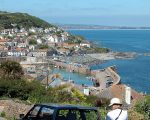
As part of the Anglo-Spanish War of 1585-1604, four galleys containing somewhere between 200 and 400 Spanish soldiers landed at Mount’s Bay on the coast of western Cornwall on what the Spaniards called 2nd August 1595, but which was 23rd July in England (England was still using the Julian Calendar but Spain was using the Gregorian Calendar).
The fleet was commanded by Captain Carlos de Amésquita and it had left Port Louis, Brittany, France, on 26th July (16th July English) to raid the south-west of England.
[Read More...]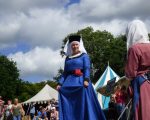
Those of you who can get to West Sussex, UK, in August may be interested to know about this event. It’s the Loxwood Joust and it’s taking place on two weekends in August, 5-6th and 12-13th, 10 am -6 pm on those dates.
The website says: “STEP BACK IN TIME AND EXPERIENCE THE VERVE AND VIGOUR OF A WORLD WHERE LIVES WERE HARSH AND HEARTS WERE PASSIONATE AT THIS UNIQUE, FUN AND EDUCATIONAL DAY OUT FOR ALL THE FAMILY!”
[Read More...]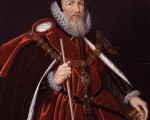
On this day in history…
31 July:
1544 – The future Elizabeth I wrote her earliest surviving letter to her stepmother, Catherine Parr. It was written in Italian and in a beautiful italic hand. Click here to read more about it.
1549 – Death of Edmund Sheffield, 1st Baron Sheffield, in Norwich. It is said that he was killed by a butcher called Fulke, while serving in the royal army against the rebels of Kett’s Rebellion. Apparently, he stumbled into a ditch and then was killed by a blow from Fulke. Sheffield was buried in St Martin’s at the Palace, Norwich.
1553 – Henry Grey, Duke of Suffolk, “was discharged out of the Tower by the Earle of Arundell and had the Quenes pardon.”
1574 – Death of John Douglas, Archbishop of St Andrews and educational reformer, in St Andrews. He was buried in the public cemetery. It is said that he died in the pulpit.
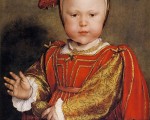
Thank you to Dora for asking the question “Why were children set up in separate households?” Historian and author Gareth Russell, who has done extensive research on royal households, is answering this question…
The reasons for royal and aristocratic children being sent to their own establishments at very young ages were a mixture of pragmatism and tradition.
It’s worth noting that many foreigner visitors to England did think it was odd that aristocratic children were habitually sent to other households to finish their education. In England, there was a school of thought that held parents would spoil their own children because they naturally loved them too much and that this would, literally, spoil the child’s education. So, a host family was sometimes considered better for the child’s long-term development and education. It also offered families, and the child, to establish a network of connections at an early age which would help them later in life.
[Read More...]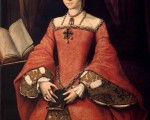
On this day in history, 30th July 1553, Mary I’s half-sister Elizabeth left her new home, Somerset House, to ride to Wanstead and greet Mary, who had been proclaimed queen on 19th July 1553 in place of Queen Jane.
Elizabeth had been at her estate at Hatfield when she heard the news that Mary was queen and so had departed for London, entering the city on 29th July through Fleet Street. She had made her way to her new townhouse, or rather palace, Somerset House, a house just off The Strand, on the north bank of the River Thames.
The contemporary source, “The chronicle of Queen Jane, and of two years of Queen Mary, and especially of the rebellion of Sir Thomas Wyat”, states:
[Read More...]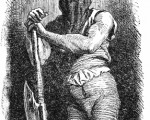
The Tudor period is known for its executions, it was a bloody time, but how much do you know about the people who were executed between 1485 and 1603? Well, grab your favourite beverage and test yourself with this fun little quiz. Keep your head!
[Read More...]
Here’s the transcript of our wonderful live chat with Gareth Russell, all about the Howard family. It was fast paced and very informative. Thanks to all who came along, and huge congratulations to Elizabeth, who won a copy of Gareth’s book!
[Read More...]
Today, the anniversary of the Battle of Gravelines in 1588, is the perfect day to launch our latest Tudor Society e-book because it’s on the Spanish Armada. The book gives details of the main events of summer 1588, and also what led to them.
We hope you enjoy it!
This is the latest e-book in our collection. At the moment, we have six others, one on each Tudor monarch, and we have another one (on feast days) coming soon.
[Read More...]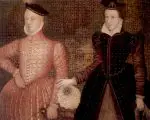
On Sunday 29th July 1565, twenty-three-year-old Mary, Queen of Scots, married nineteen-year-old Henry Stuart, Lord Darnley.
Mary, Queen of Scots, was queen regnant of Scotland and was the daughter of James V of Scotland (son of James IV and Margaret Tudor) and Mary of Guise. She had become queen when she was just six days old. The bridegroom was the son of Matthew Stuart, the 4th Earl of Lennox and Margaret Douglas (daughter of Margaret Tudor, Henry VIII’s sister). Mary and Darnley were related; they were half-cousins.
The banns for the marriage had been read in St Giles’s Cathedral, High Kirk of Edinburgh, on Sunday 22nd July and in that afternoon Darnley was made Duke of Albany. On Saturday 28th July, heralds proclaimed the forthcoming marriage of Mary and Darnley at the Market Cross in Edinburgh and proclaimed that Darnley would be made king following the wedding.
[Read More...]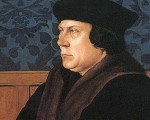
As it is the anniversary of the execution of Thomas Cromwell today, in this week’s Claire Chats video talk Claire talks about the primary sources accounts of Cromwell’s execution, his scaffold speech and the prayer he said. She talks about the controversy over his speech and what his prayer said about his faith.
[Read More...]
Here’s the full edition of our 84-page August edition of Tudor Life Magazine. The focus of this magazine is “everyday life” and we have loads of articles for members to enjoy…
[Read More...]